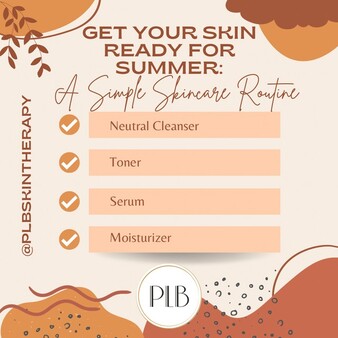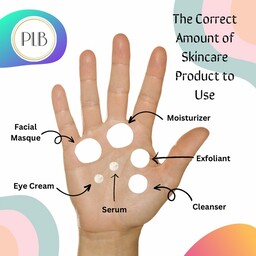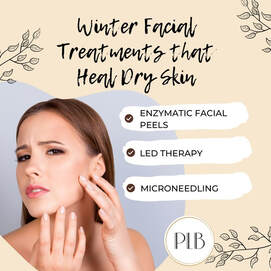|
Chemical peels slough off dead skin cells and remove the surface layer to reveal a more youthful appearance. With dryness at an all-time high, winter is the perfect time to get one. Here's why:
Less Sun = Less Risk Winter's low sun exposure minimizes the risk of sun sensitivity after a peel, giving your skin ample time to heal before UV rays hit. Moisture Boost Chemical peels remove the dry, flaky outer layer, allowing your moisturizer to penetrate deeper and keep your skin hydrated all winter long. Goodbye Dullness Winter weather leaves skin looking lackluster. Peels buff away dead cells, revealing the brighter, smoother skin beneath. Collagen Power Some peels stimulate collagen production, helping to combat winter's aging effects and plump up your skin.
0 Comments
Algae have long been revered for their nutritional and therapeutic properties. In recent years, algae have also gained popularity in the skincare world, thanks to their impressive array of benefits for the skin.
Hydration Hero Algae are packed with polysaccharides, natural humectants that attract and retain moisture in the skin, making them excellent hydrators, helping to keep the skin plump, supple, and dewy. Antioxidant Arsenal Algae are rich in antioxidants that help to neutralize free radicals, protecting the skin from oxidative stress and its damaging effects like premature aging and skin damage. Anti-inflammatory Allies Algae possess anti-inflammatory properties that can help soothe and calm irritated skin and conditions like acne, rosacea, and eczema. Brightening Boosters Certain algae species, such as red algae, contain compounds that can help brighten the skin and reduce the appearance of hyperpigmentation by inhibiting the production of melanin. Collagen Champions Algae can stimulate the production of collagen, promoting firmer, more youthful-looking skin. Generally safe for all skin types and non-comedogenic, algae can be found in a variety of skincare products, including cleansers, serums, moisturizers, and masks. Algae are a natural and effective way to improve your skin's health and appearance. With their impressive array of benefits, algae are truly the ocean's gift for glowing skin. Our skin microbiome plays a key role in maintaining the skin’s pH balance, preventing dryness, irritation, and breakouts, and preventing skin aging. When the skin microbiome is out of balance, we experience things like inflammation and acne. To keep everything functioning optimally, use products that encourage cellular turnover and keep the microbiome protected: hydrating serums, acid-rich resurfacers and retinol cremes.
Morning:
- Cleanse with a neutral cleanser (eg. non-exfoliating), double cleanse if you’re not prone to skin sensitivity. - Tone to ph balance skin post-cleansing. - Apply an antioxidant serum to reduce free radical damage; Vitamin C-based serums work on both dry and oily skin types. - Finish with a moisturizer that contains sunscreen that is SPF 30 or higher. Evening: - Cleanse with a neutral cleanser, you can use the same one you use in the morning. - Tone to ph balance skin post-cleansing. - Apply a repairing serum to help in turning over new skin cells & stimulating collagen production to repair any damage that has occurred throughout the day. - Finish with a moisturizer that is lighter in texture. Sun exposure is the main culprit of skin damage and because the skin on the neck and chest is more delicate, damage can become rapidly visible. Fortunately, there are a few easy ways to smooth out those lines.
Sun Protect: The skin on your décolletage is very thin and often receives the most incidental sun exposure, so it tends to be the first place the visible signs of aging start to show. Make sure to apply >30 SPF to this area (neck & bust) at least once per day. When applying products to your neck, make sure to swipe product up rather than down and apply moisturizers and serums in circular motions on that area. Use a Jade Roller: Jade Rollers are a great way to smooth out wrinkles on your décolletage. Start by cleansing then apply a small amount of serum or oil to your skin. Slowly roll the Jade Roller in an upward motion, ensuring not to be too aggressive in your movement. Do it slowly, taking the time to rub away any tension and stress and allowing the jade to cool the skin. Apply gentle pressure while rolling the jade over your skin which will assist in sweeping away toxins and balancing excess fluid. Apply a Beauty Oil or Serum: Another way to keep your neck and décolleté smooth and youthful-looking is to apply a repairing serum or beauty oil daily and/or nightly. Look for serums and oils that contain skin hydrators (eg. hyaluronic acid), brighteners (eg. vitamin C, alpha arbutin) and anti-oxidants (eg. organ oil) for maximum benefit. Apply in upward and outward motions to support collagen-building and lymphatic drainage. Use a jade roller (as outlined above) to add more soothing massage benefit. Salicylic acid is a beta hydroxy acid (BHA) that penetrates deeply into pores, helping to unclog pores and remove sebum that can lead to breakouts. A good choice for treating blackheads and whiteheads, salicylic acid can be found in face washes, toners, spot treatments, moisturizers and more. Salicylic acid should be used no more than twice a day.
Hyaluronic acid is neither a BHA or AHA. Instead, hyaluronic acid is a naturally produced substance that helps lubricate and hydrate skin, joints and eyes. Hyaluronic acid helps bind water to collagen, trapping water in the skin. This makes skin plumper and more full-looking. As we age, our bodies naturally produce less hyaluronic acid, making skin drier and more brittle over time., leading to wrinkles and fine lines. Hyaluronic acid doesn’t irritate skin and is most beneficial for those with dry and/or aging skin. You can find it in cleansers, serums, moisturizers and more. Like hyaluronic acid, azelaic acid isn’t a BHA or AHA. It’s actually a dicarboxylic acid, doing the work of both an AHA and BHA, working at the surface of your skin and also penetrating deeply. For best effect, use azelaic acid at night to even out skin tone and reduce redness, rosacea and melanoma. Azelaic acid is ideal for people with sensitive skin and those who are pregnant. As we begin spending more time in the sun, we also need to make sure we are protecting our skin from environmental dangers like pollution and UV rays. Add an antioxidant-rich beauty supplement to your skincare routine to complement the topical antioxidants (including SPF) you’re already using.
CoQ10 neutralizes free radicals and the damage they do to cell membranes. CoQ10 protects the membranes of mitochondria and regenerates other antioxidants, like vitamins C and E, both of which are important for healthy skin. Astaxanthin delays the impacts of UV exposure, resulting in less painful bright red skin now and fewer wrinkles later. Astaxanthin can also improve skin elasticity, smoothness and hydration. Vitamin C is a key driver of collagen and fibroblast production. Vitamin C stabilizes the collagen you already due to its antioxidant properties, which can help neutralize free radical damage, a main source of collagen degradation and DNA damage. As the seasons change, so do our skincare needs: we need replace our heavier winter routine, with a lighter one for spring and summer. This is also an opportunity to revamp our products and look for better synergy between active ingredients. Below are a few skincare power couples to keep in mind while transitioning your skincare regimen this spring.
Vitamin C & SPF Vitamin C is a powerful anti-ager that helps protect the skin from sun damage, fights antioxidants, repairs the skin’s barrier and increases collagen production. When used together, vitamin C and sunscreen helps protect your skin from environmental damage and harmful UV rays. Niacinimide & Salicylic Acid Both niacinimide and salicylic acid are ingredients that treat breakouts. When used together, they reduce pore size, kill acne bacteria, strengthen the skin’s barrier and stimulate collagen and elastin production. Retinoids & Peptides Retinoids (vitamin A derivatives) are an essential part of a nighttime routine as they treat acne, wrinkles and fine lines. Peptides assist skin cells with rejuvenation and repair. When combined, the two help tighten, smooth and plump skin. Vitamin C & Vitamin E As previously mentioned, vitamin C is essential for skin rejuvenation and protection, while vitamin E keeps the skin smooth and soft. Using them together will protect the skin from oxidative stress while maintaining a supple skin texture. Hyaluronic Acid & Exfoliating Acids AHAs and BHAs are very effective at resurfacing skin, but can strip skin, making it sensitive to dryness. Hyaluronic acid is a skin hydrator that holds 1,000 times its weight in water. Used together, they help promote cellular turnover, brightening and rejuvenating skin, while mitigating potential damage from dryness. Unsure about how much to use of each of your facial products? Below is a quick guide to help clear up any doubts.
Cleanser: Dispense a nickel-sized amount into your palm and massage into your face, neck & upper chest. Serum: Because serums are so concentrated & emollient, use just a pea-sized amount. Moisturizer: For lotions and cremes, use a nickel- to quarter-sized amount for your face neck and upper chest. Mask: Depending on the type of mask, use anywhere from a dime- to a quarter-sized amount that will cover your face (and neck, if applicable). Exfoliant (Scrub): Use a dime- or nickel-sized amount. Eye Cream: Use an amount the size of a pea, divided between both eyes. Crisp winter air, hot showers and indoor heating can lead to a number of skin issues: dryness, a compromised moisture barrier and increased sensitivity. While moisturizers and sheet masks help bridge the gap at home, a clinical treatment performed by your esthetician can help bring your skin to the next level.
Enzymatic Peels Enzymatic peels allow you to get the benefits of effective exfoliation without causing the skin to go through any extreme peeling or irritation. Using fruit enzymes like pineapple (bromelain), papaya (papain) and pumpkin to resurface the skin, they remove dry, dead skin cells without damaging living, resulting in a softer, brighter, more even-toned complexion. LED Therapy During an LED therapy treatment, light waves penetrate the skin at various depths to address acne, fine lines and dull skin. Red light offers can relieve any pain associated with inflammatory acne as well as stimulate collagen production. LED light therapy is suitable for all skin types, has no downtime, and is a quick treatment that can be added to most facials. Microneedling Microneedling firms, tightens and improves skin tone and texture. The treatment causes micro-injuries to the skin that, in turn, encourage cellular turnover that ultimately minimizing the appearance of fine lines and wrinkles. Those with extreme dryness or active, inflammatory acne should consult with their skincare professional to determine if microneedling is right or them. |
Archives
February 2024
Categories |









 RSS Feed
RSS Feed